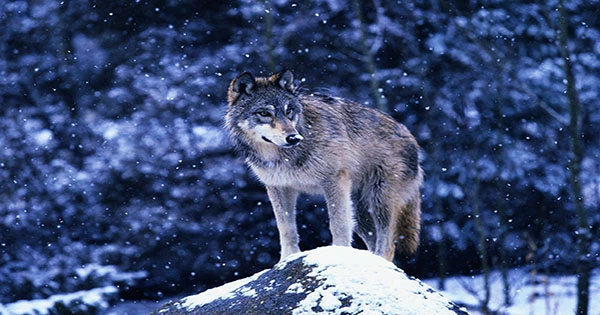Reintroducing just 1-3 animal species could restore vast swaths of degraded ecosystems to anything resembling their former splendor, and an UN-funded study has found 20 large animals that, if properly positioned, could restore most of the world. Some species play a disproportionately large role in their local habitat, making their extinction especially destructive. On the other hand, when a species is regionally extinct rather than completely extinct, restoring a population from another location can have astonishingly good results.
The reintroduction of a few wolves to Yellowstone Park is likely the most well-known example, but there is still controversy about whether some of the wolves’ impacts were due to sampling error. The United Nations Environment Program tasked Dr. Carly Vynne of the non-profit RESOLVE with leading a team tasked with finding species with the most potential for impact. The scientists published their findings in the journal Ecography, revealing 13 herbivorous mammals and seven predators that could help us reclaim much of the natural world we’ve lost. The benefits of a single species in an area can cascade down the food chain, increasing the abundance and diversity of soil invertebrates.
In a statement, Vynne added, “Our findings provide both hope and scope for reversing the erosion of entire zoological groupings.” To figure out what kind of restoration is needed, the scientists compared present habitats to those 500 years ago, before intercontinental travel and the industrial revolution accelerated local species extinction. They discovered that only 16 percent of the world retains complete wild animal groups, and only 6% is identical to the pre-1500 form.
Despite this, the researchers found that a 54 percent expansion in territory holding intact mammal groups could be accomplished rather easily, mostly in the far north and parts of Africa and South America. The authors of the report identify the 30 ecoregions they believe should be prioritized for such a program.
Even in Europe, where widespread deterioration has lasted the longest, the proper placement of beaver, bison, reindeer, wolf, and lynx might alter the landscape. The wolf and wild horse alone have the potential to rebuild vast swaths of Asia. Hippopotamuses, cheetahs, and lions in Africa are obvious examples, but the research also highlights the potential of lesser-known species like the dama gazelle and common tsessebe.
Many of the other creatures on the list are endangered or threatened, including the dama gazelle. Their return could assure their own survival, but it would also aid many of their lesser-known cousins. “Our proposals may not be acceptable everywhere on the ground just yet,” said UNEP co-author Joe Gosling. “Local assessments will evaluate if, for example, hunting pressures or a lack of an adequate prey base mean other concerns need to be addressed before launching a reintroduction program.”
“However, our findings demonstrate that if mitigating factors are addressed, there are vast areas of the world that could be appropriate for large mammal restoration.” Keystone species restoration is typically necessary for the resuscitation of Indigenous traditions, and it can also benefit urban communities. Thousands of little beaver dams, for example, are more successful than contemporary infrastructure at controlling floods and droughts.
The advantages of re-wilding go far beyond the preservation of species. Because healthy ecosystems contain more carbon than degraded ones, programs like these have the potential to combat climate change, though the extent to which they can do so is still up for debate. Carnivore reintroduction is sometimes contentious since they pose a threat to livestock and are thought to be deadly to humans, despite the lack of proof. With the probable exception of hippopotamuses, Africa’s most dangerous mammal, herbivores often meet less resistance. Any reintroductions are likely to be short-lived unless hunting and other risks are controlled.















